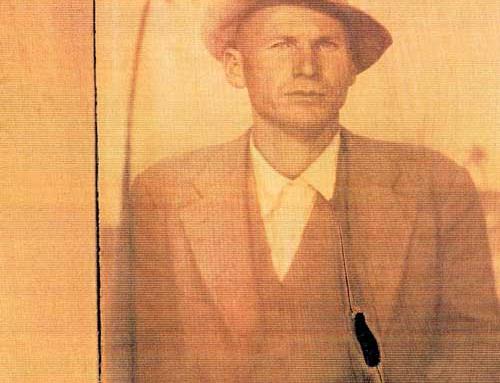The Big Sandy Valley, a geographical corridor approximately 120 miles in length, stretches from Pikeville to Catlettsburg along the Kentucky-West Virginia border. It is almost 5,000 square miles of mountainous land that includes the counties (going from north to south) of Boyd, Lawrence, Johnson, Floyd, Martin, and Pike counties, along with the southeastern sections of Magoffin, Knott, and Letcher counties.
The Big Sandy Valley – sometimes called Kentucky’s last frontier – was shaped by a series of historical events. Settlement in the seventeenth and eighteenth century was difficult because of Indian hostilities and the formidable geography of the region. In the nineteenth century, the small population was divided by the conflict of the American Civil War.
 After the Civil War, the region was joined to the outside world by steamboats that plied the rivers from the 1830s to the beginning of World War I. Early in the twentieth century, the colorful steamboat era came to an end as railroads pressed south into the valley, running parallel to the rivers, and facilitating the extraction of the region’s valuable timber and coal.
After the Civil War, the region was joined to the outside world by steamboats that plied the rivers from the 1830s to the beginning of World War I. Early in the twentieth century, the colorful steamboat era came to an end as railroads pressed south into the valley, running parallel to the rivers, and facilitating the extraction of the region’s valuable timber and coal.
In 1964, President Lyndon Johnson launched the federal government’s war on poverty from Tommy Fletcher’s front porch, near Inez, in Martin County. That iconic image of the President and his wife talking with people who were obviously very poor played to the mainstream image of the Big Sandy Valley. That image has been reinforced by “documentaries” and fictional presentations like A&E’s popular mini-series on the Hatfields and McCoys.
Today, we live in a world of cultural awareness and sensitivity to other people’s unique differences. And yet that cultural sensitivity never seems to extend to the people of Appalachia, who remain the punchline of an American joke.
For more than two centuries, politicians, novelists, journalists, and scholars have “discovered” and written about Appalachia with the same analytical success enjoyed by the three blind men who went to see the elephant. For example, in 1899, William Goodell Frost defined the people of Appalachia as “our contemporary ancestors;” seven decades later, minister Jack E. Weller defined Appalachians as “yesterday’s people.” However, the cruelest assessment was rendered by the great English historian, Arnold Toynbee, who compared the people of Appalachia to the “barbarians of the Old World” and observed that we were a people “who had acquired civilization and then lost it.” One of the truths of life is that often, even when we know something is wrong, we still don’t know what is right.
That’s the purpose of “Hidden Heroes of the Big Sandy Valley” which includes biographical profiles of Mary Schrader Hager, Jenny Wiley, Daniel Williams, Colonel George Gallup, John C. C. Mayo, Effie Waller Smith, Jean Bell Thomas, Martin Himler, Fred Vinson, Russell Williamson, Loretta Preston Spears, Cratis Williams, Leonard Roberts, Vera Mae Slone, Don Osborne and his siblings, Eula Hall, Billy C. Clark, Chad Perry, George Wolfford, Donnis Butcher, Ira Potter, and Sam McKinney. The book concludes with an essay on “Folk Medicine of the Big Sandy Valley” by well-now local historian Ernest Martin “Ernie” Tucker.
The people who are profiled in this book are true representatives of millions of people who have populated the Big Sandy Valley for more than two hundred years. I invite you to read their stories and discover the reality of a great regional people.
“Hidden Heroes of the Big Sandy Valley” was published by the Jesse Stuart Foundation in 2015 and can be purchased on this site; or by calling 606.326.1667 or emailing jsf@jsfbooks.com.
By James M. Gifford
JSF CEO & Senior Editor
The Big Sandy Valley, a geographical corridor approximately 120 miles in length, stretches from Pikeville to Catlettsburg along the Kentucky-West Virginia border. It is almost 5,000 square miles of mountainous land that includes the counties (going from north to south) of Boyd, Lawrence, Johnson, Floyd, Martin, and Pike counties, along with the southeastern sections of Magoffin, Knott, and Letcher counties.
The Big Sandy Valley – sometimes called Kentucky’s last frontier – was shaped by a series of historical events. Settlement in the seventeenth and eighteenth century was difficult because of Indian hostilities and the formidable geography of the region. In the nineteenth century, the small population was divided by the conflict of the American Civil War.
After the Civil War, the region was joined to the outside world by steamboats that plied the rivers from the 1830s to the beginning of World War I. Early in the twentieth century, the colorful steamboat era came to an end as railroads pressed south into the valley, running parallel to the rivers, and facilitating the extraction of the region’s valuable timber and coal.

In 1964, President Lyndon Johnson launched the federal government’s war on poverty from Tommy Fletcher’s front porch, near Inez, in Martin County. That iconic image of the President and his wife talking with people who were obviously very poor played to the mainstream image of the Big Sandy Valley. That image has been reinforced by “documentaries” and fictional presentations like A&E’s popular mini-series on the Hatfields and McCoys.
Today, we live in a world of cultural awareness and sensitivity to other people’s unique differences. And yet that cultural sensitivity never seems to extend to the people of Appalachia, who remain the punchline of an American joke.
For more than two centuries, politicians, novelists, journalists, and scholars have “discovered” and written about Appalachia with the same analytical success enjoyed by the three blind men who went to see the elephant. For example, in 1899, William Goodell Frost defined the people of Appalachia as “our contemporary ancestors;” seven decades later, minister Jack E. Weller defined Appalachians as “yesterday’s people.” However, the cruelest assessment was rendered by the great English historian, Arnold Toynbee, who compared the people of Appalachia to the “barbarians of the Old World” and observed that we were a people “who had acquired civilization and then lost it.” One of the truths of life is that often, even when we know something is wrong, we still don’t know what is right.
That’s the purpose of “Hidden Heroes of the Big Sandy Valley” which includes biographical profiles of Mary Schrader Hager, Jenny Wiley, Daniel Williams, Colonel George Gallup, John C. C. Mayo, Effie Waller Smith, Jean Bell Thomas, Martin Himler, Fred Vinson, Russell Williamson, Loretta Preston Spears, Cratis Williams, Leonard Roberts, Vera Mae Slone, Don Osborne and his siblings, Eula Hall, Billy C. Clark, Chad Perry, George Wolfford, Donnis Butcher, Ira Potter, and Sam McKinney. The book concludes with an essay on “Folk Medicine of the Big Sandy Valley” by well-now local historian Ernest Martin “Ernie” Tucker.
The people who are profiled in this book are true representatives of millions of people who have populated the Big Sandy Valley for more than two hundred years. I invite you to read their stories and discover the reality of a great regional people.
“Hidden Heroes of the Big Sandy Valley” was published by the Jesse Stuart Foundation in 2015 and can be purchased on this site; or by calling 606.326.1667 or emailing jsf@jsfbooks.com.
By James M. Gifford
JSF CEO & Senior Editor




